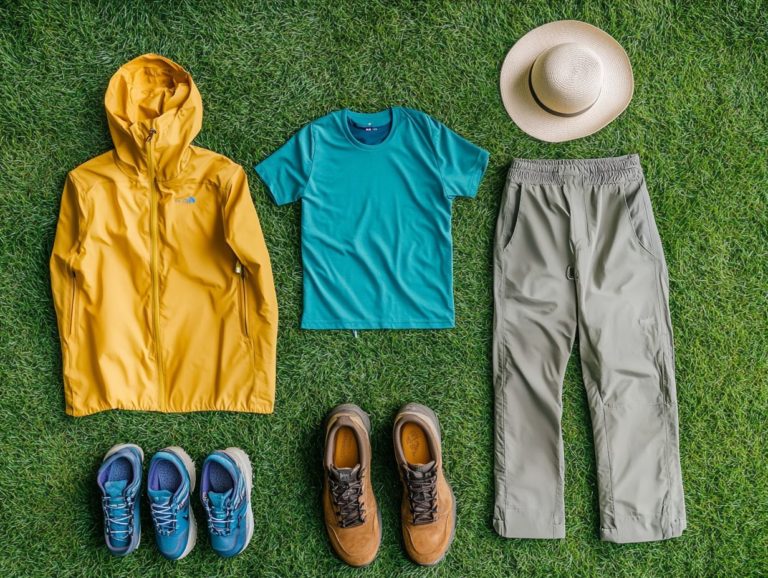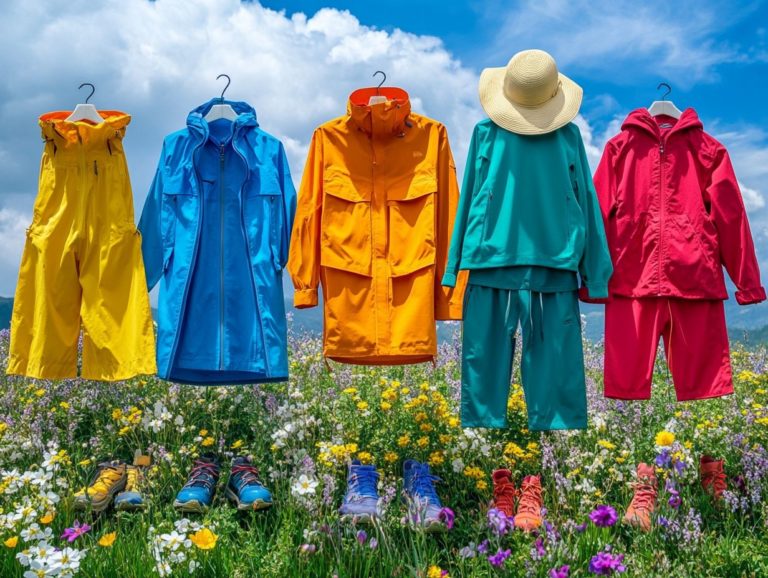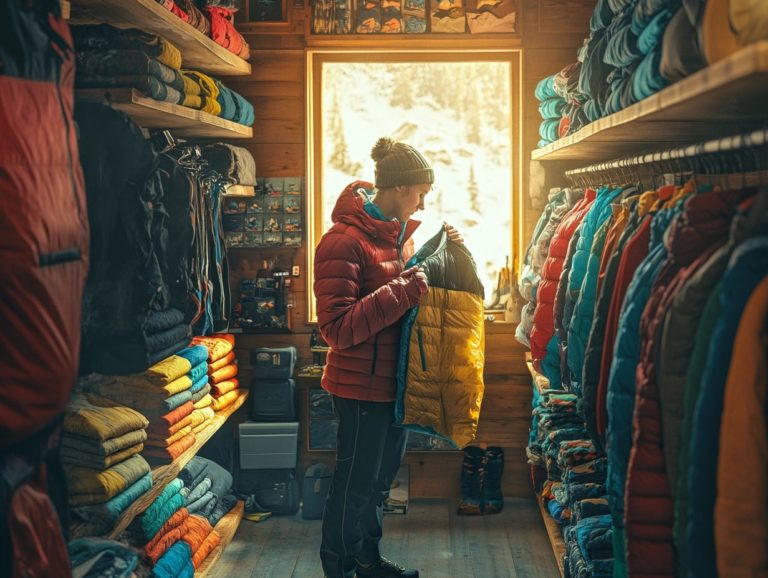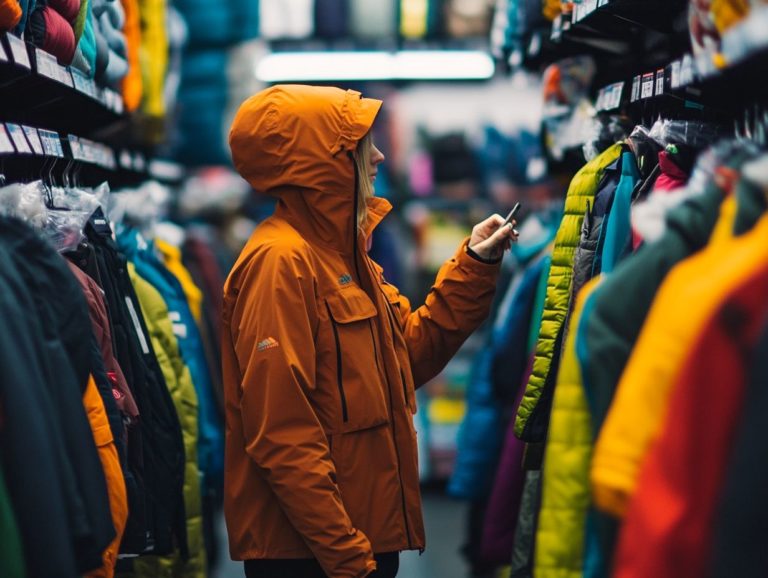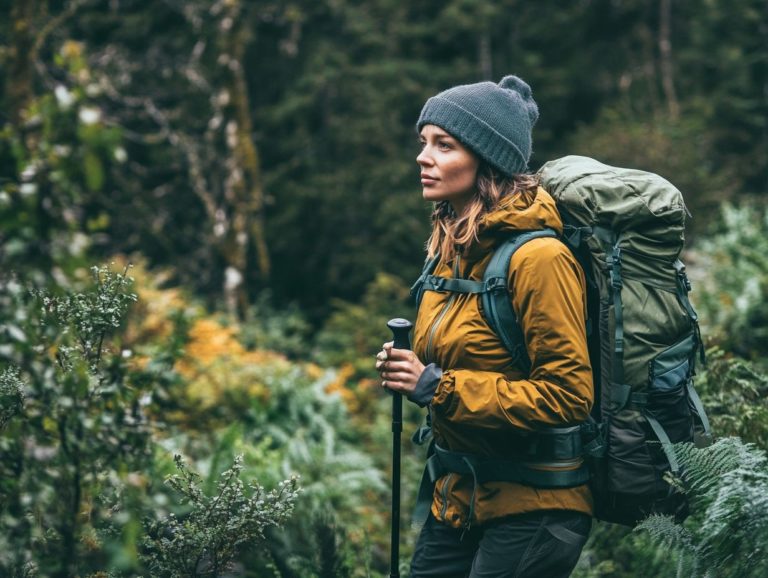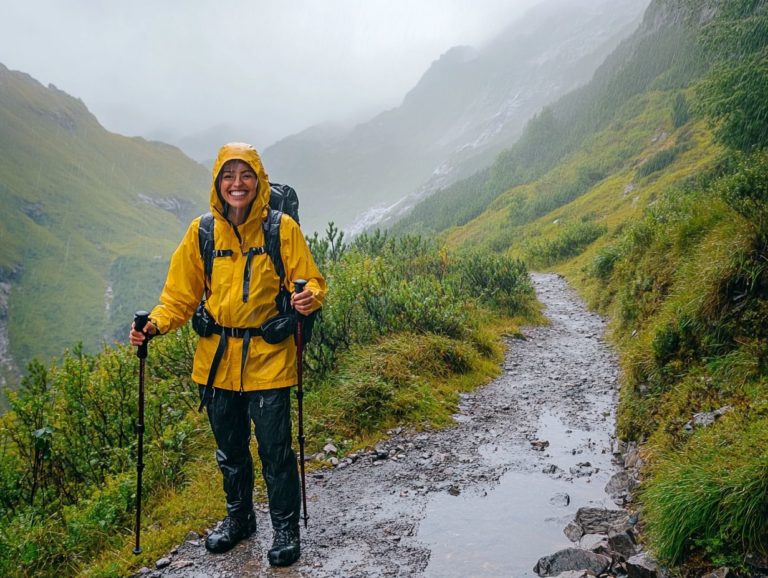Choosing the Right Outdoor Clothing for Wildlife Viewing
Wildlife viewing offers a thrilling adventure that immerses you in nature. Your experience can be significantly elevated by choosing the right outdoor photography clothing.
Dressing appropriately not only shields you from the elements. It also ensures comfort and agility while you observe animals in their natural habitats, especially during the hunting seasons.
Get ready to discover the essential benefits of choosing the right clothing, like merino wool a type of fine wool that keeps you warm and comfortable and synthetic fabrics. This article will cover the key factors to consider when choosing your gear and the must-have items to incorporate into your wardrobe.
You ll also find valuable tips for maintaining your outdoor clothing, including how to care for Cabela s gear and other outdoor essentials. Doing so allows you to fully savor your wildlife excursions.
Embrace this journey and discover how to equip yourself for an unforgettable experience!
Contents
- Key Takeaways:
- Benefits of Proper Outdoor Clothing
- Comfort and Mobility
- Factors to Consider when Choosing Outdoor Clothing
- Weather Conditions
- Location and Terrain
- Activity Level
- Essential Clothing Items for Wildlife Viewing
- Tips for Selecting and Maintaining Outdoor Clothing
- Frequently Asked Questions
- What type of footwear is best for wildlife viewing?
- Should I bring any special accessories for wildlife viewing?
- What should I consider when choosing clothing for wildlife viewing in hot weather?
- Are there any specific clothing items I should avoid when going on a wildlife viewing excursion?
Key Takeaways:
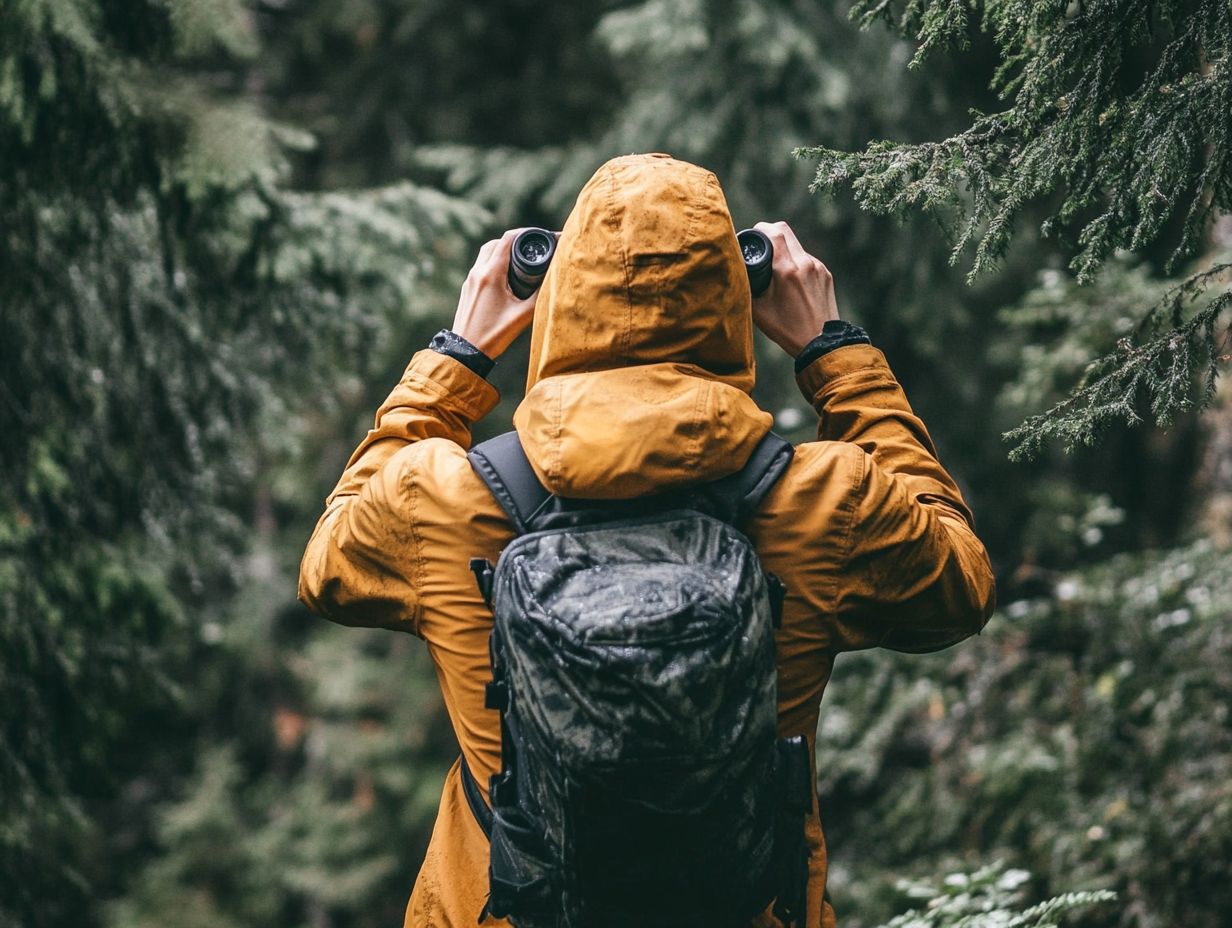
- Always consider weather conditions, location, and activity level when choosing outdoor clothing.
- The layering system, waterproof and windproof gear, and proper footwear are essential clothing items.
- Proper fit and functionality are crucial for protection from the elements.
What is Wildlife Viewing?
Wildlife viewing is an enthralling experience that invites you to immerse yourself in the beauty of nature. It allows you to observe and appreciate wildlife in its natural environment.
This pursuit deepens your connection to the wild and champions the principles of wildlife conservation. For example, protecting species like musk-oxen in stunning locations such as Dovrefjell, Norway showcases effective nature management.
Engaging in photo tours in Norway gives you a rare chance to encounter this majestic wildlife up close. Such encounters can spark a fervor for ecological preservation, inspiring you to advocate for the environments you hold dear.
Take, for instance, the Serengeti in Tanzania, renowned for its breathtaking migrations of wildebeest and zebras. These experiences elevate your awareness of the importance of nature.
Capturing stunning images helps conservation efforts. Many tour operators allocate a portion of their proceeds to protect ecosystems that nurture these remarkable species.
This includes initiatives focused on protecting habitats during the hunting seasons.
Benefits of Proper Outdoor Clothing
Selecting the right outdoor clothing is crucial for nature and wildlife photographers. It ensures both comfort and performance during your outdoor photography adventures.
Opting for attire crafted from durable materials, such as merino wool and high-quality synthetic fabrics, offers weather resistance and enhances your overall experience in the field.
This is particularly important when navigating the varied climates and environments that come with outdoor photography.
Protection from Elements
Investing in high-quality outdoor clothing offers you essential protection from the elements, especially in cold climates. A robust layering system is crucial.
A proper base layer made from moisture-wicking synthetic fabrics or heavyweight merino wool will help regulate your body temperature and keep you warm.
Waterproof materials provide the necessary barrier against rain and snow. Beyond the base layer, mid-weight insulation layers, like fleece or down, are vital for trapping heat.
These materials strike the perfect balance between warmth and breathability, ensuring you remain comfortable even during physical activity.
The outer layer, which includes lightweight pack options, acts as your weather-resistant shield against wind, rain, and unexpected snowfall.
Often made from advanced fabrics like Gore-Tex, this final layer lets moisture escape while keeping the elements at bay. By understanding and effectively utilizing a layering system, you can significantly enhance your comfort and performance in diverse weather conditions.
Comfort and Mobility
Comfort and mobility in outdoor clothing are paramount for you as a nature photographer. They allow for effortless movement while you chase that perfect shot, especially when climbing or squatting. When your attire is designed to facilitate a full range of motion and paired with robust footwear fit for climbing and squatting, along with wool socks, you ll navigate diverse terrains with confidence!
Beyond the cut and fit of your garments, features like lots of pockets significantly elevate your outdoor experience. They offer easy access to essential gear and accessories, such as lenses and filters and even a quick-dry towel, so you never miss a moment.
Opting for quiet fabrics that minimize noise helps you maintain a low profile in nature. This enables you to blend in seamlessly and avoid startling wildlife, which is crucial during hunting seasons. Fabrics that let air in are also crucial, as they help regulate your body temperature across varying weather conditions.
Choosing the right outdoor clothing enhances your comfort and mobility. For more insights, check out choosing the right outdoor clothing for your adventure, as it also plays a vital role in your success at capturing breathtaking moments in the great outdoors.
Factors to Consider when Choosing Outdoor Clothing
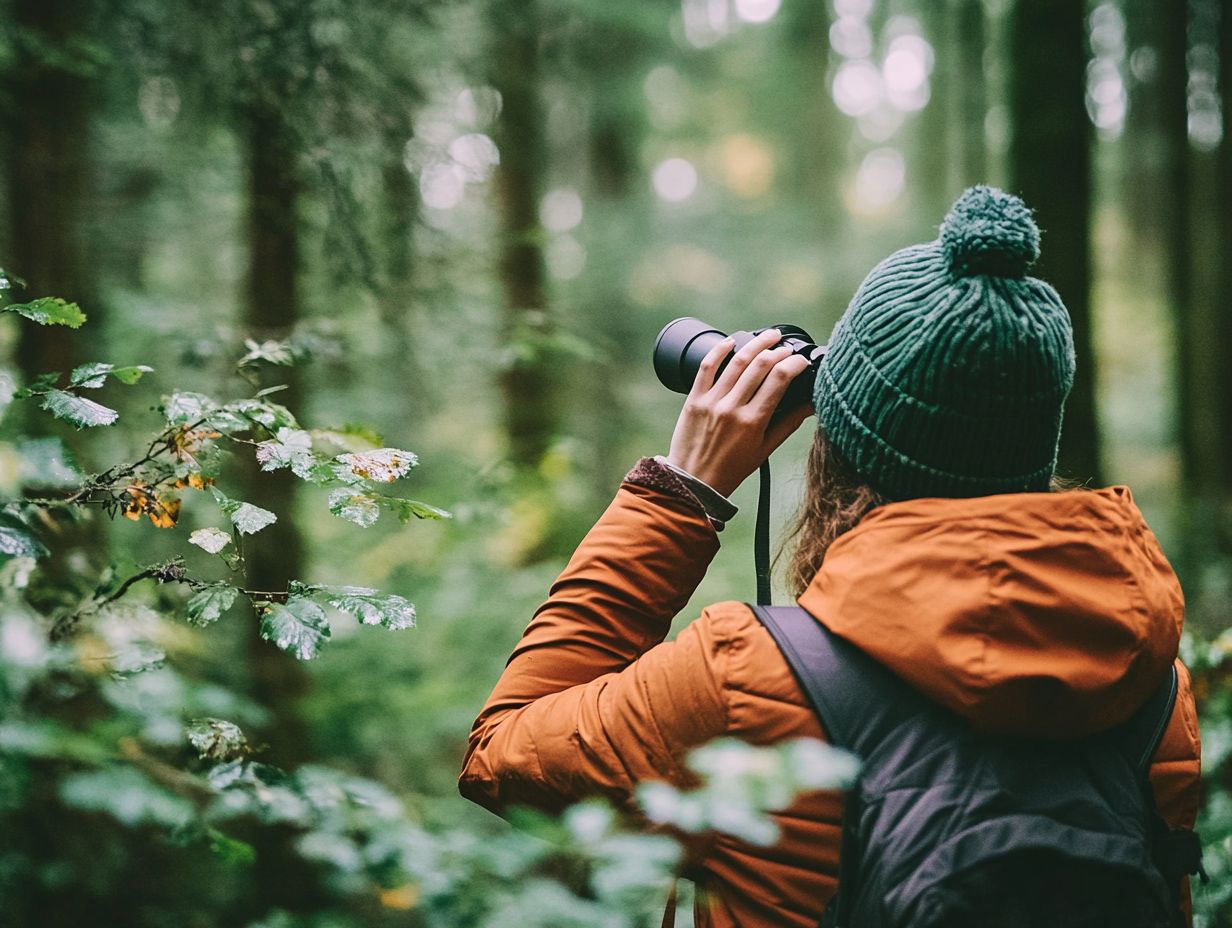
When choosing outdoor clothing for wildlife photography, consider several key factors, such as weather conditions, location and terrain, and your level of activity. Understanding these elements enables you to make informed choices that enhance your comfort and safety while capturing breathtaking images of wildlife across various habitats.
Weather Conditions
Understanding weather conditions is essential for you as a nature photographer, as they directly impact your choice of outdoor clothing, especially in extreme temperatures. In cold climates and areas prone to unpredictable weather, opting for fabrics that let air in, along with jackets that keep the rain out, ensures you remain comfortable and protected against the elements. This way, you can concentrate fully on capturing those stunning wildlife moments.
Take sudden rain showers as an example. A flexible, waterproof jacket, especially Cabela’s Dry-Plus, can be your best friend. It keeps the chill at bay and allows you to stay focused on your subject rather than grappling with discomfort. On the flip side, during hot and humid days, lightweight, moisture-wicking clothing becomes crucial to prevent overheating and maintain your agility in the field.
By grasping these varying scenarios, you can prioritize clothing that not only shields you from the weather but also elevates your experience and performance in nature. This is crucial for your next big shot in less-than-ideal conditions.
Location and Terrain
The location and terrain where you pursue wildlife photography play a crucial role in determining the outdoor clothing and gear you ll need, including tactical vests for your photography accessories. For challenging terrains, sturdy footwear, waterproof gaiters, and even microspikes for winter conditions spikes that attach to your shoes for better grip in icy conditions are essential to navigate safely while capturing stunning images of wildlife.
In more rugged environments, like dense forests or mountainous regions, layering becomes critical, with attention to clothing color for camouflage. Moisture-wicking base layers fabrics that draw sweat away from your body to keep you dry insulated mid-layers, and durable outer shells all work in harmony to provide warmth and protection.
Similarly, in arid deserts, lightweight, breathable fabrics and wide-brimmed hats provide vital insect protection while shielding you from the sun, allowing for unrestricted movement. Different climates require meticulous attention to detail, making packable rain jackets a must for unexpected showers in temperate zones.
By thoughtfully considering the terrain and incorporating items like insect net hats, you can equip yourself with clothing that supports your mobility and elevates your overall photography experience. For more insights, discover what to look for in outdoor clothing.
Activity Level
The level of activity involved in outdoor photography is crucial when it comes to selecting the right clothing for wildlife photography. When you’re on the move, lightweight, moisture-wicking fabrics and UPF materials become necessary. You also need options that allow easy movement.
Neutral colors can significantly impact your interactions with wildlife and your overall comfort. For example, if you find yourself navigating through dense forests or scaling rugged terrains, durable, wear-resistant materials will serve you well, providing protection against the elements.
Conversely, if you’re stationed at a birdwatching hide, breathable layers are ideal for adapting to fluctuating temperatures. For more tips on appropriate attire, check out this guide on how to choose outdoor clothing for your next trip, ensuring that your attire remains unobtrusive to avoid alarming the wildlife.
Don’t overlook accessories; sun hats, polarized sunglasses, and tactical vests equipped with pockets for your gear can elevate both practicality and comfort. Ultimately, striking the right balance between freedom of movement, using quiet fabric, and protective clothing is essential for capturing stunning wildlife moments. For more insights, check out this guide on how to choose the best outdoor clothing for your activity without sacrificing convenience.
Essential Clothing Items for Wildlife Viewing
For successful wildlife viewing, it’s crucial to have a thoughtfully constructed layering system, including an Arctic jacket, along with waterproof and windproof gear and the right footwear, such as Cabelas gear.
These clothing items not only shield you from the elements but also significantly enhance your mobility and comfort as you embark on your wildlife photography adventures.
Layering System
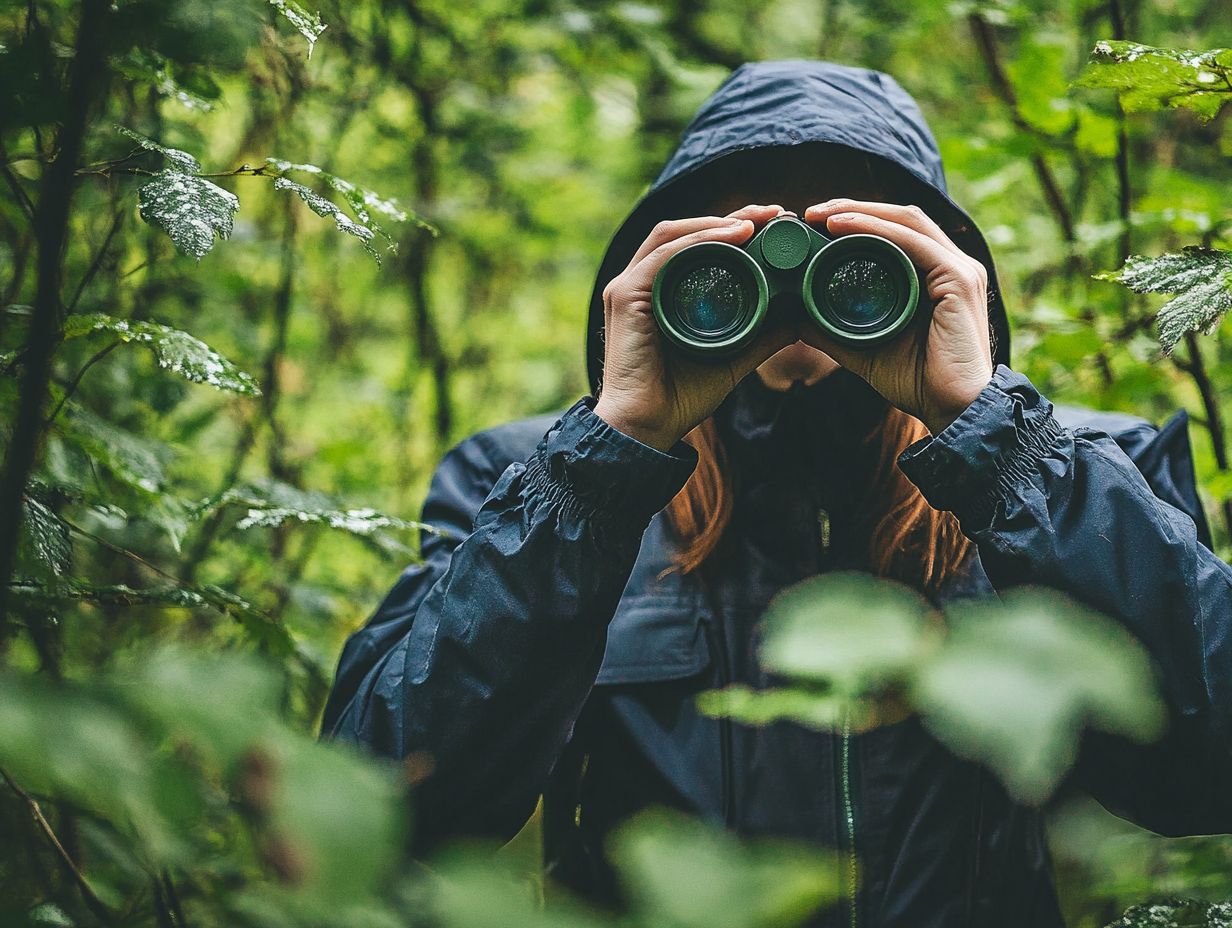
A well-structured layering system is essential for outdoor clothing, particularly for wildlife photographers like yourself. It offers the flexibility and comfort needed to adapt to ever-changing weather conditions.
Begin with a moisture-wicking base layer crafted from synthetic fabrics or merino wool. Then, add mid-weight and heavyweight layers before finishing with a protective outer layer. For more guidance on selecting suitable materials, check out these tips for choosing the best outdoor clothing fabric. This approach guarantees optimal performance while you’re out observing wildlife.
The base layer is your first line of defense, efficiently pulling sweat away from your skin to keep you dry. Next, the mid-layer provides insulation, often made from materials like fleece or down, to trap warmth effectively.
Finally, the outer layer serves as a shield against wind, rain, and sudden temperature drops, using waterproof and breathable materials such as Gore-Tex.
This layering strategy keeps you comfortable during your adventures, allowing you to focus solely on capturing stunning images without the annoyance of discomfort. Each layer plays a critical role in regulating your body temperature and protecting you from environmental challenges, ultimately enhancing your overall performance and enjoyment in the great outdoors.
Waterproof and Windproof Gear
Waterproof and windproof gear is essential for you as a nature photographer, providing a critical shield against unpredictable weather while ensuring your outdoor clothing performs at its best. By opting for high-quality waterproof materials, these garments not only block moisture but also enhance your weather resistance, allowing you to concentrate on capturing stunning wildlife without the elements getting in your way.
The durability of this clothing often stems from advanced technologies like GORE-TEX and other breathable fabrics, which effectively wick away sweat while keeping water out. Staying dry and comfortable is key during those long hours spent outdoors.
Adjustable hoods and cuffs will keep you snug against the wind, letting you explore freely without worry of damaging your equipment or compromising your comfort. Investing in premium outdoor apparel that prioritizes these attributes not only elevates your shooting experience but also fosters a deeper connection with the natural world around you.
Gear up and get ready to capture unforgettable moments!
Proper Footwear
Proper footwear is essential for wildlife photographers. It significantly influences your ability to navigate diverse terrains while climbing and squatting to capture that perfect shot. Investing in sturdy boots, paired with waterproof gaiters and microspikes for winter conditions, ensures your safety and comfort during outdoor photography excursions.
The right pair of boots enhances your stability and protects you against sharp rocks and uneven surfaces you might encounter in the field. Waterproofing is critical, especially when traversing through wet grass or rain-soaked areas. Moisture can easily ruin a good day of shooting.
Superior traction provides the grip you need on slippery trails or muddy paths, minimizing the risk of accidents. A thoughtfully designed sole with deep lugs gives you that extra bite into varied ground textures, allowing you to maintain your focus on capturing breathtaking images without compromising your footing.
Tips for Selecting and Maintaining Outdoor Clothing
Selecting and maintaining your outdoor clothing is essential as a wildlife photographer. It ensures that your gear stays functional and comfortable across diverse conditions.
Proper care involves understanding how clothes fit and work, alongside employing effective storage techniques to extend the lifespan of your outdoor apparel and gear from reputable brands.
Fit and Functionality
The fit and functionality of outdoor clothing are crucial for wildlife photographers. They directly affect your performance and comfort during excursions. A proper fit allows for a full range of motion, which is vital in preventing distractions and discomfort while capturing breathtaking images of wildlife in their natural habitat.
This becomes especially important when you’re navigating through dense underbrush or climbing to elevated vantage points. Your mobility can be the deciding factor between a missed shot and a picture-perfect moment. Functional features, like strategically placed pockets for quick access to your camera gear and moisture-wicking fabrics for temperature regulation, can significantly enhance your overall experience.
The right layering system adapts to ever-changing weather conditions, ensuring you remain focused on your craft rather than being distracted by your attire. For family outings, consider the best outdoor clothing choices for family hikes. Ultimately, high-quality outdoor clothing combines fit and functionality, enabling you to fully immerse yourself in the beauty that surrounds you.
Proper Care and Storage
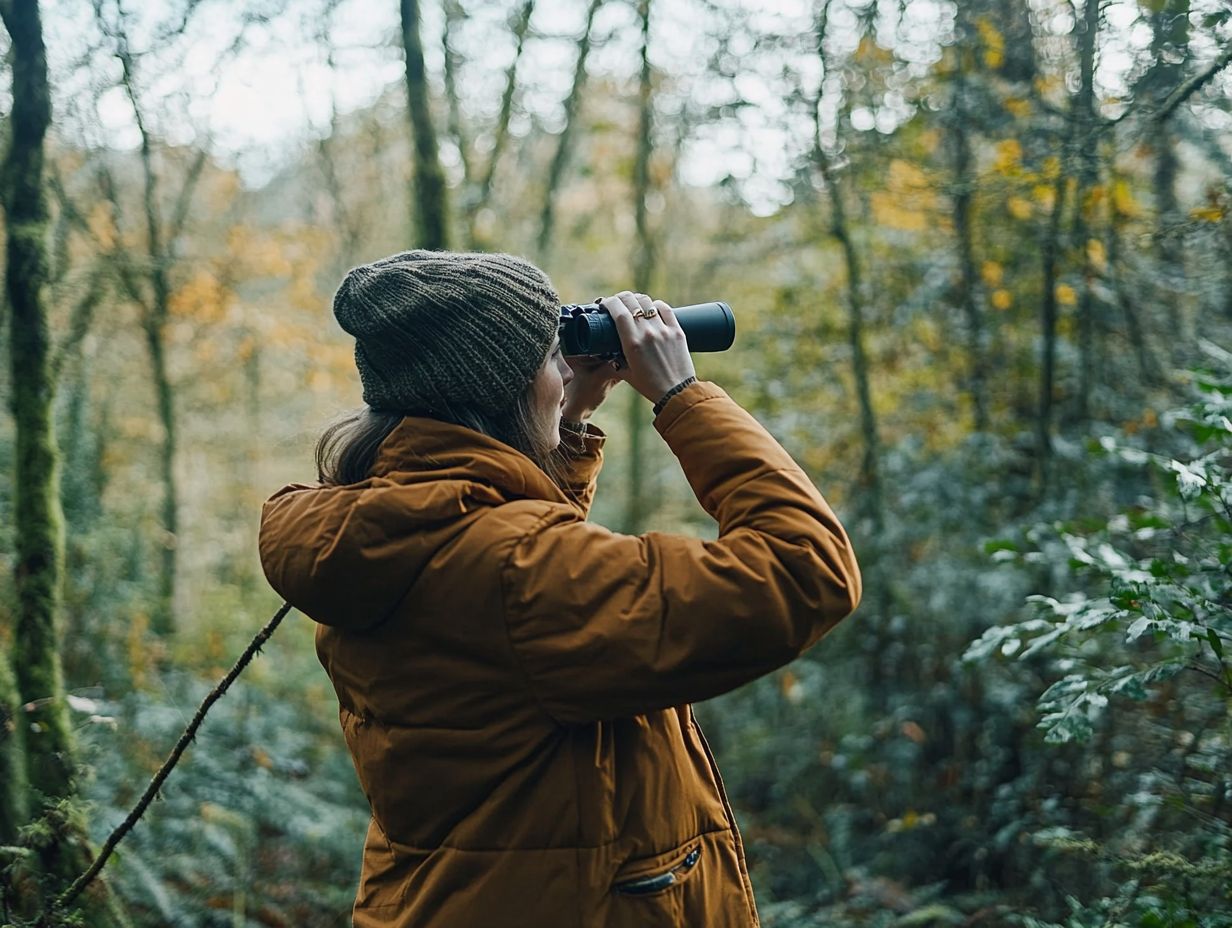
Taking good care of your outdoor clothing is key to keeping your gear in top-notch condition over time. By implementing effective care practices like washing with the right detergents and storing your garments properly you can significantly extend the lifespan of your outdoor clothing and gear.
Regular maintenance not only preserves the materials but also boosts their performance in various weather conditions. For example, breathable fabrics such as Gore-Tex require specific cleaning methods to maintain their waterproof abilities. Fleece materials thrive under gentle washing to avoid pilling.
After each outing, make it a habit to allow your clothing to air dry completely before folding or storing it. This simple step prevents mold and mildew from making a home in your gear. For long-term storage, opt for breathable garment bags rather than plastic containers. Choosing breathable garment bags keeps your gear fresh and ready for your next thrilling adventure!
Frequently Asked Questions
What should I wear for wildlife viewing in cold weather?
Dress in layers! Start with a moisture-wicking base layer, then add insulation, and finish with a waterproof outer layer.
Do I need to wear camouflage for wildlife viewing?
Camouflage is not necessary for wildlife viewing. Animals are more likely to be scared off by sudden movements or loud noises rather than your clothing. Neutral colors like khaki, gray, and green work best.
What type of footwear is best for wildlife viewing?
Sturdy, comfortable shoes with good traction are perfect for wildlife viewing. Hiking boots with ankle support and waterproof options are great for longer trips.
Should I bring any special accessories for wildlife viewing?
Binoculars and a camera are essential for wildlife viewing. Don’t forget a hat, sunglasses, and sunscreen to protect yourself from the sun!
What should I consider when choosing clothing for wildlife viewing in hot weather?
Wear light, breathable clothes to stay cool and shield yourself from the sun. Choose lightweight fabrics that wick moisture away from your skin, and a hat and sunglasses will add extra protection.
Are there any specific clothing items I should avoid when going on a wildlife viewing excursion?
Avoid bright or neon colors; they can startle wildlife. Also, steer clear of strong perfumes or colognes, as these can disturb animals natural behaviors.

